Isis’s destruction of an ancient civilisation mattered more to the west than human casualties
Palmyra offensive: As the world baulked at the unfolding savagery, one site became a political and cultural hostage, writes Robert Fisk

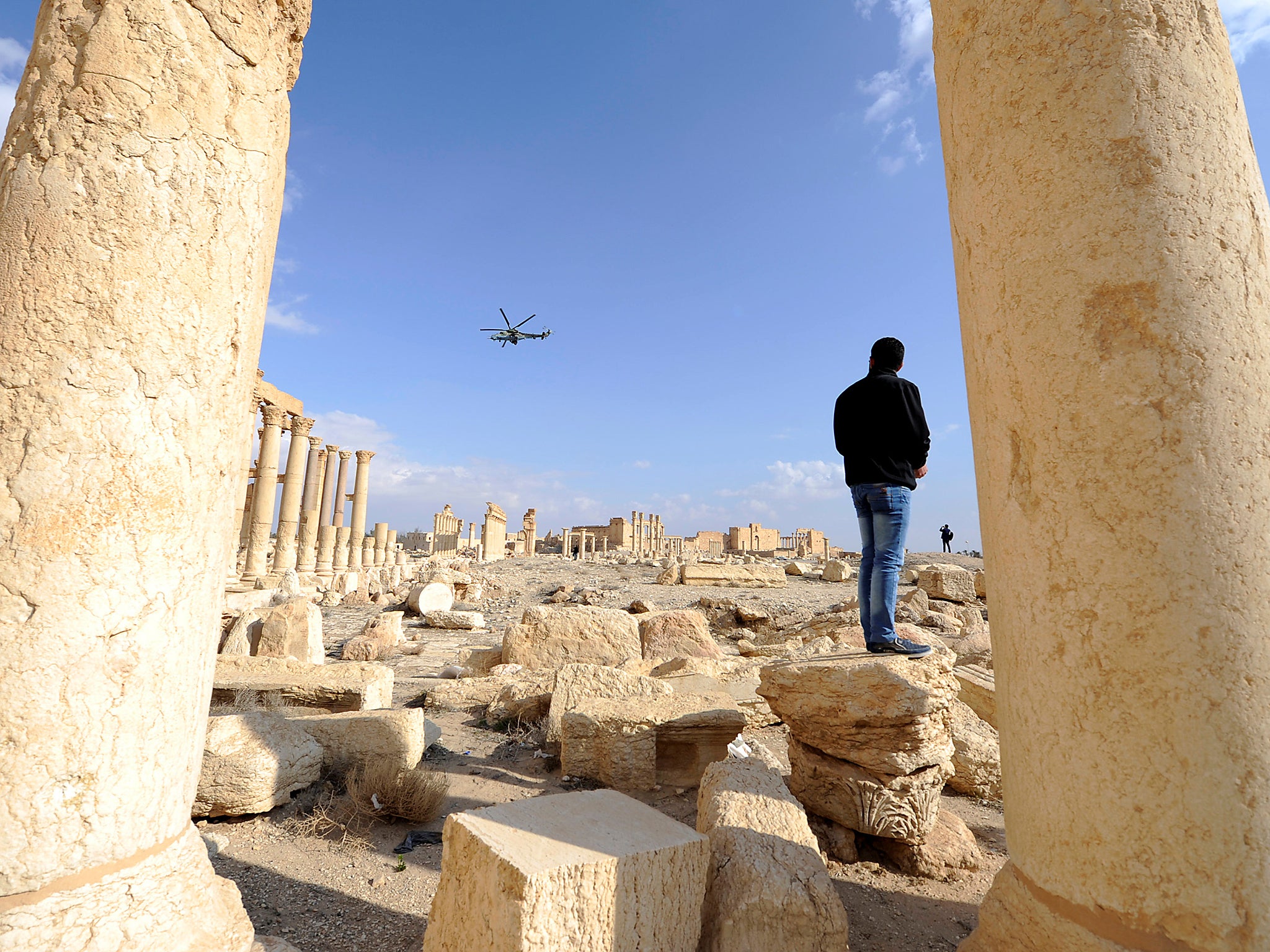
The first time Isis attacked Palmyra, their men arrived at night in five mile-long columns of tanks and trucks, suicide bombers in armoured vehicles at the front, fighters at the back. The Syrian soldiers defending the east of the Roman city on 12 May 2015 – their records showed that the first Isis units arrived at 9.45pm – fired their Milan anti-tank rockets at the suiciders, but the bombs had been packed so densely into the Isis vehicles that the explosions blew up not only the bombers but the Syrians who killed them. The Isis bands poured, 2,500 of them, towards the ancient city of Queen Zenobia – from Raqqa, the Wadi Abiat Dam, the T3 natural gas plant and from two districts of Hama province.
The general commanding Syrian forces would recount later how his 40 soldiers on the eastern highway out of the city fought to the end. They were never seen again. Twenty-five soldiers were later paraded in the old Roman theatre – and shot through the back of the head, one by one, by a boy-child who was later taken away by Isis. Civilians were interrogated and at least 12 were taken to a main square opposite a mosque where their heads were sliced off. After weeks of interrogation intended to make him reveal where Roman treasures had been stored, the elderly head of antiquities, Khaled el-Asaad, was publicly beheaded, his body tied to a Roman pillar, his spectacles perched back upon his nose by his killers. In reality, the treasures had been taken to Damascus only hours before Isis entered Palmyra.
When I arrived in the oil fields just west of Palmyra, photographs had already emerged from the newly captured city. One – sent out by an oil worker who later escaped – showed the 12 decapitated corpses, heads rolled off into pools of blood, lying in the street. I needed to send these pictures to The Independent – but carefully cropped one of the photos so that it showed merely a single body amid the street of slaughter, prone amid liquid which was obviously blood. I hoped this might be printable.
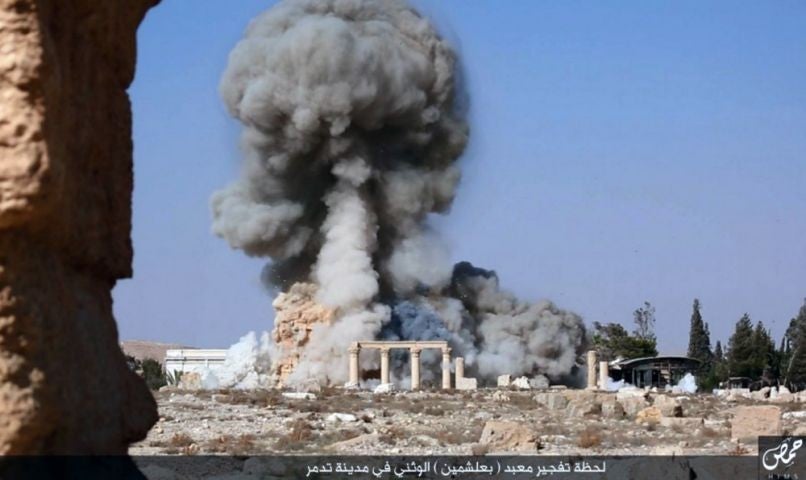
Little did I know that evening that thousands of miles away, in the offices of The Independent, editors had argued over the propriety of showing even this one photograph, which I had edited down from the original portrait of carnage in Palmyra. In the end, they decided to publish and be damned. But it demonstrated how Isis’s cruelty could generate not just terror among its immediate victims but the deepest moral concern for those who had to tell the truth about these vicious warriors without soaking their readers in horror.
Isis’s cruelty generated the deepest moral concern of those who had to tell the truth about these vicious warriors without soaking their readers in horror
But what most enraged the Syrian military – long grown used to Isis’s savagery – was the failure of the Americans to attack the Islamist convoys before they reached Palmyra. Was the US air force not supposed to be destroying the Islamist cult of Isis? Had the US, with its all-seeing satellites and high-altitude reconnaissance aircraft, not seen the blankets of sand clouds thrown up by the Isis convoys that afternoon? Of course they had. But Washington was prepared to see the Syrian regime suffer in its battle with Isis just as much as it was later committed to the destruction of Mosul and Raqqa if that is what it took to destroy the Islamist cult. Three months later, Vladimir Putin sent units of the Russian air force to support the Syrian army.
A Syrian field commander named Fouad Khadour was to recall how his men would in the coming weeks assault forward Isis positions in the low mountains southeast of Palmyra. He had to teach his soldiers to fight back against Isis. In the abandoned caves in which Isis had sheltered, the Syrians had been astonished to find heaps of women’s clothing. “Then we realised,” Khadour said, “that they probably belonged to the Yazidi women sex slaves whom Daesh [Isis] had abducted in Iraq.”
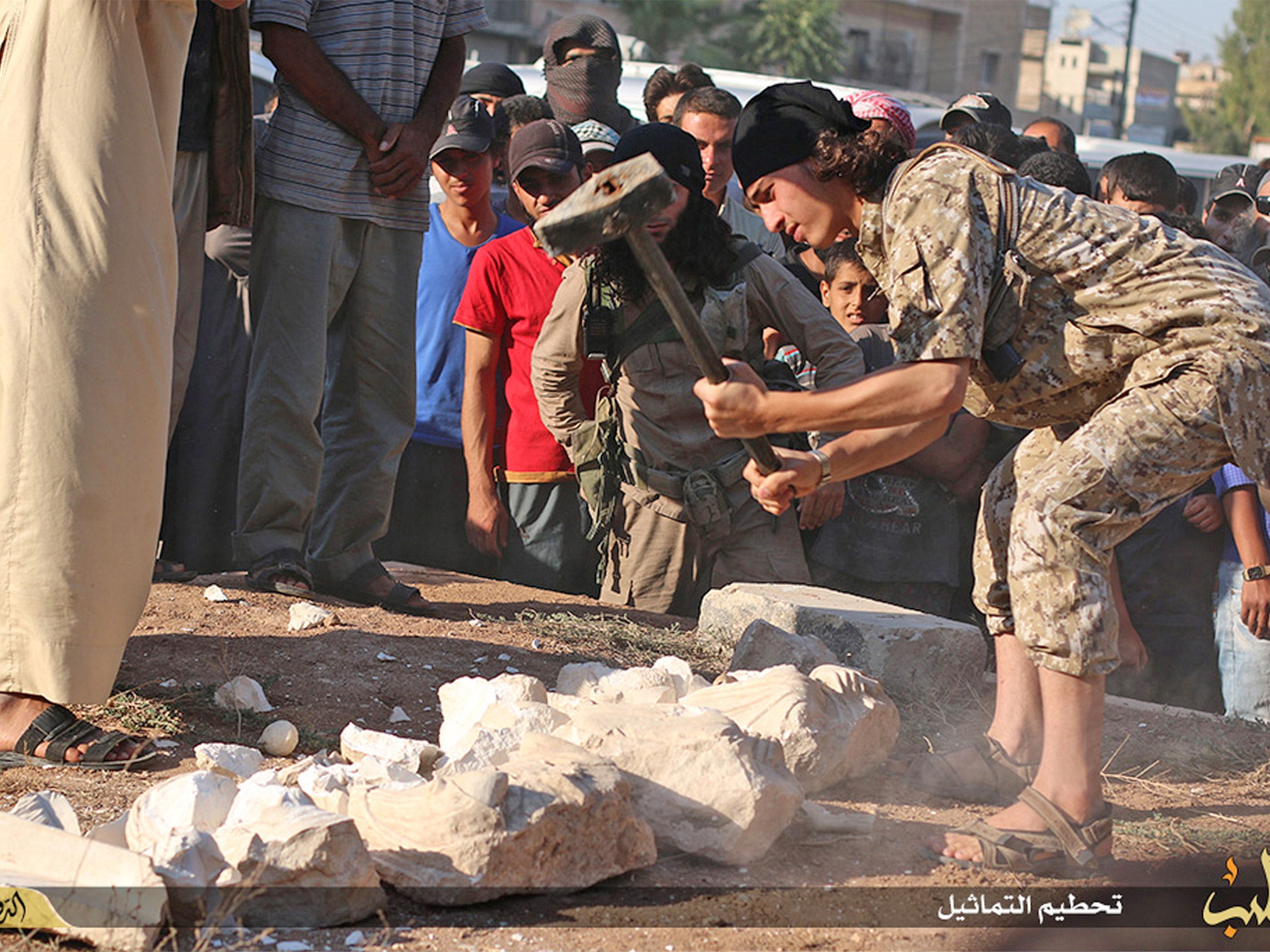
On 27 March 2016, the Syrians – assisted now by Russia’s Sukhoi fighter bombers – blasted their way back into Palmyra. It was a swift and astonishing victory. The Russians sent in their military de-mining teams and set up a camp near the ruins. Putin even sent a Russian orchestra to play in the Roman city – an almost Roman gesture of pride and hubris. Then, as the Syrians concentrated on their battle for Aleppo in December, Isis stormed back into Palmyra. Although Moscow admitted no casualties, two Russian soldiers were shot down by Isis before they could flee.
A Kremlin intelligence officer, dining with his Chinese opposite number at an official function in Beirut, expressed his fury at the recapture of the city and the humiliation this represented for the Kremlin. How had the city been allowed to fall back into Isis hands? A few days later, I recalled the Russians’ words to a clutch of officers at the Syrian army’s headquarters in Damascus. “We too were angry,” one of them responded. Indeed.
We in the west raged against these acts of nihilism – as we had once cursed the Taliban for destroying the Buddhas of Bamiyan in Afghanistan
So it was incumbent on them to retake the city – which they did, under intense mortar fire, at the beginning of March 2017. General Khadour led his men through minefields, wounded himself by metal splinters, many of his soldiers dying as they trod on Isis mines buried beneath apparently well-trodden earth roads. It was a most bloody affair, his officers would later agree. Khadour’s son, a soldier, had been killed two years earlier. He would himself die just over a year after the last Palmyra battle when a sliver of shrapnel from a shell fired by an Isis tank penetrated his chest during a desert battle.
But for the world, it was the destruction Isis wrought upon the Roman city that mattered more than the human casualties. When I walked through the city after its initial recapture, a hangman’s noose still swung above a Roman colonnade – too high to be cut down. But the timeless Temple of Bel could never be rebuilt from the cracked and crushed stone that lay in tens of thousands of fragments around it, some of the ancient lintels splintering upwards into the Roman columns and smashing hunks of them to the ground.
Isis was liberal in its use of explosives; it could use them in battle against armies – and in battle against ancient civilisations. We in the west raged against these acts of nihilism – as we had once cursed the Taliban for destroying the Buddhas of Bamiyan in Afghanistan. Did not history belong to the world, we asked. But so did the weapons which Isis and Nusrah and the Syrian army used in the battles around Palmyra.
Joanne Farchakh, a Lebanese archaeologist long familiar with the looting of ancient southern Iraqi cities as well as Isis’s depredations against Palmyra, would mourn old Al-Asaad’s death. “A joyful guy,” was how she described him, “a guardian of the past”. He had become a hostage because he had stayed behind, believing that Isis would never kill an old man of 82. But as Farchakh was to say, the fate of Palmyra, too, was to become a political and cultural hostage.
Isis slaughter in the sacred Syrian city of Palmyra: The survivors’ stories
Robert Fisk, 5 June 2015
When the black-cowled gunmen of the “Islamic State” infiltrated the suburbs of Palmyra on 20 May, half of Assad Sulieman’s oil and gas processing plant crews – 50 men in all – were manning their 12-hour shift at the Hayan oil field 28 miles away. They were the lucky ones. Their 50 off-duty colleagues were sleeping at their homes next to the ancient Roman city. Twenty-five of them would soon be dead, among up to 400 civilians – including women and children – who would die in the coming hours at the hands of the Islamist militia which every Syrian now calls by its self-styled acronym ‘Daesh’.
Oil engineer Ahmed – he chose this name to protect his family in Palmyra – was, by chance, completing a course at Damascus University on the fatal day when Palmyra fell. “I was appalled,” he said. “I tried calling my family. It was still possible to get through on the phone. They said Daesh’ [Isis] wasn’t allowing anyone to leave their home. My brother later went onto the street. He took pictures of bodies. They had been decapitated, all men.
“He managed to send the photographs out to me from [the Isis-controlled city of] Raqqa on the internet which is the only communications working there.”
Some of the photographs are too terrible to publish. They show heads lying several feet from torsos, blood running in streams across a city street. In one, a body lies on a roadway while two men cycle past on a bicycle. So soon after the capture of Palmyra were the men slaughtered that shop-fronts can still be seen in the photographs, painted in the two stars and colours of the red-white-and-black flag of the Syrian government.
“The Daesh forced the people to leave the bodies in the streets for three days,” Ahmed continued. “They were not allowed to pick up the bodies or bury them without permission. The corpses were all over the city. My family said the Daesh came to our house, two foreign men – one appeared to be an Afghan, the other from Tunisia or Morocco because he had a very heavy accent – and then they left. They killed three female nurses. One was killed in her home, another in her uncle’s house, a third on the street. Perhaps it was because they helped the army [as nurses]. Some said they were beheaded but my brother said they were shot in the head.”
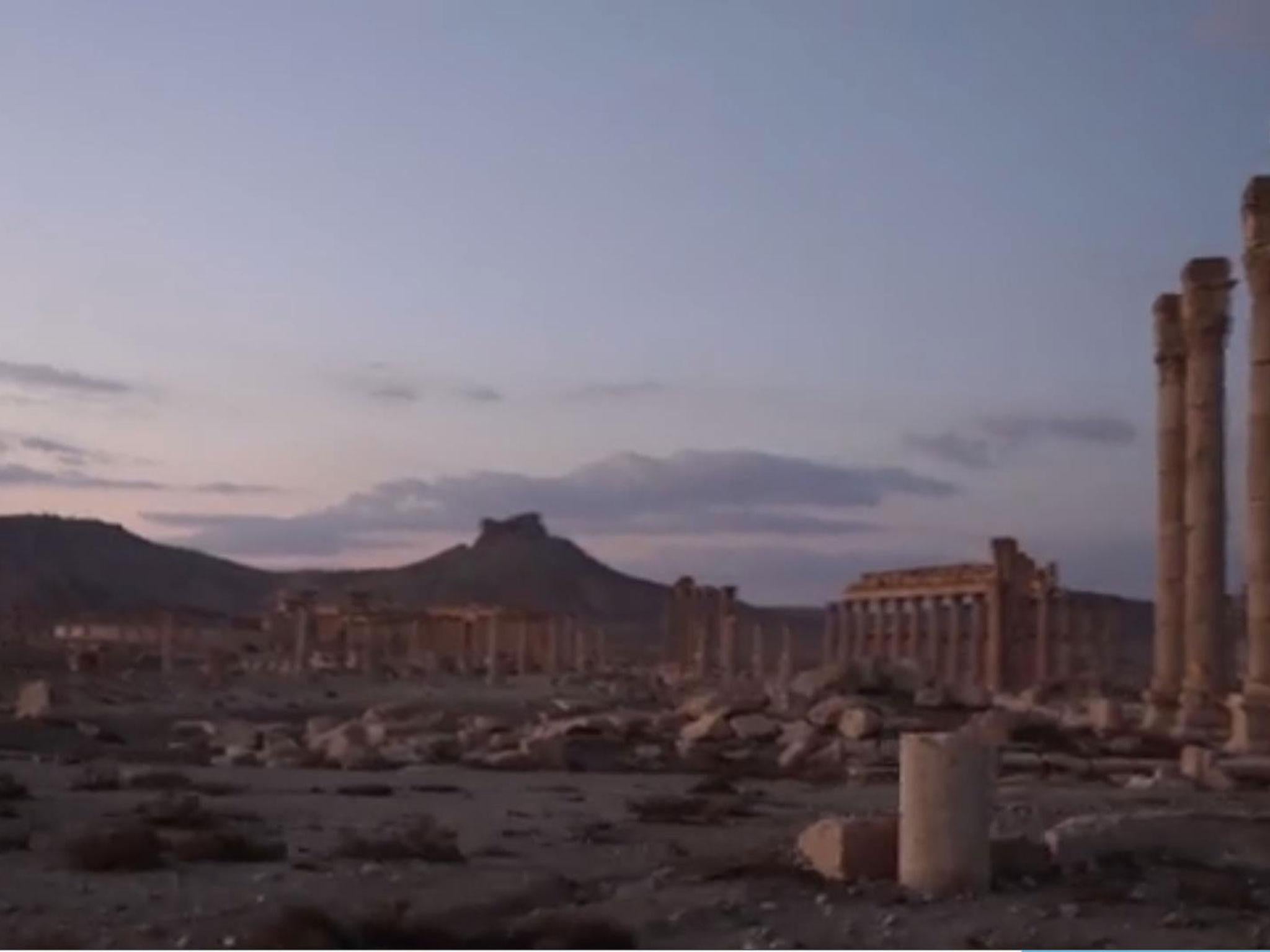
In the panic to flee Palmyra, others perished when their cars drove over explosives planted on the roads by the Islamist gunmen. One was a retired Syrian general from the al-Daas family whose 40-year old pharmacist wife and 12-year old son were killed with him when their car’s wheels touched the explosives. Later reports spoke of executions in the old Roman theatre amid the Palmyra ruins.
The director of the Hayan gas and oil processing plant, Assad Sulieman, shook his head in near-disbelief as he recounted how word reached him of the execution of his off-duty staff. Some were, he believes, imprisoned in the gas fields which had fallen into the hands of the “Islamic State”. Others were merely taken from their homes and murdered because they were government employees. For months prior to the fall of Palmyra, he had received a series of terrifying phone calls from the Islamists, one of them when gunmen were besieging a neighbouring gas plant.
He said: “They came on my own phone, here in my office, and said: ‘We are coming for you.’ I said to them: ‘I will be waiting’. The army drove them off but my staff also received these phone calls here and they were very frightened. The army protected three of our fields then and drove them off.” Since the fall of Palmyra, the threatening phone calls have continued, even though Daesh have cut all mobile and landlines in their newly occupied city.
Another young engineer at Hayan was in Palmyra when Isis arrived. So fearful was he when he spoke that he even refused to volunteer a name for himself. “I had gone back to Palmyra two days before and everything seemed alright,” he said. “When my family told me they had arrived, I stayed at home and so did my mother and brother and sisters and we did not go out. Everyone knew that when these men come, things are not good. The electricity stopped for two days and then the gunmen restored it. We had plenty of food – we were a well-off family. We stayed there a week, we had to sort out our affairs and they never searched our home.”
The man’s evidence proved the almost haphazard nature of Isis rule. A week after the occupation, the family made its way out of the house – the women in full Islamic covering – and caught a bus to the occupied city of Raqqa and from there to Damascus. “They looked at my ID but didn’t ask my job,” the man said. “The bus trip was normal. No one stopped us leaving.” Like Ahmed, the young oil worker was a Sunni Muslim – the same religion as Daesh’s followers – but he had no doubts about the nature of Palmyra’s occupiers. “When they arrive anywhere”, he said, “there is no more life”.
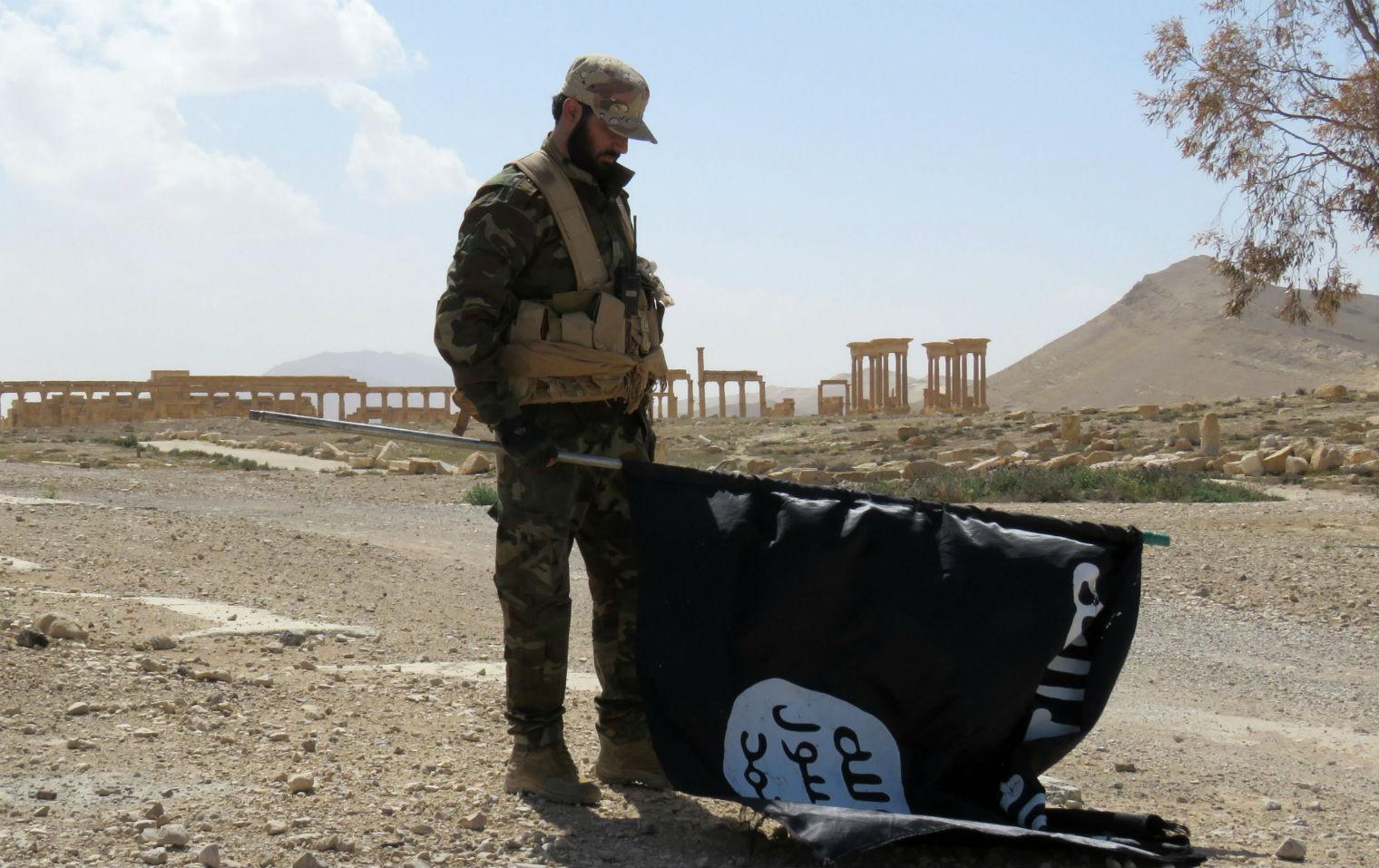
Syria’s own oil and gas lifeline now stretches across a hundred miles of desert from Homs in the midlands to the strategic oil fields across the broiling desert outside Palmyra. It took two hours to reach a point 28 miles from Palmyra; the last Syrian troops are stationed eight miles closer to the city.
To the west lies the great Syrian air base of Tiyas – codenamed ‘T-4’ after the old fourth pumping station of the Iraqi-Palestine oil pipeline – where I saw grey-painted twin-tailed Mig fighter bombers taking off into the dusk and settling back onto the runways. A canopy of radar dishes and concrete bunkers protect the base and Syrian troops can be seen inside a series of earthen fortresses on each side of the main road to Palmyra, defending their redoubts with heavy machine guns, long-range artillery and missiles.
Syrian troops patrol the highway every few minutes on pick-up trucks – and make no secret of their precautions. They pointed out the site of an improvised explosive device found a few hours earlier – more than 30 miles west of Palmyra. Further down the road was the wreckage of truck bombs which had been hit by Syrian rocket-fire. Assad Sulieman, the gas plant director, declares that his father named him after President Bashar al-Asasad’s father Hafez. He described how Islamist rebels had totally destroyed one gas plant close to Hayan last year, and how his crews had totally restored it to production within months by using cannibalized equipment from other facilities. His plant’s production capacity has been restored to three million cubic metres of gas per day for the country’s power stations and six thousand barrels of oil for the Homs refinery.
But the man who understands military risks is General Fouad – like everyone else in the area of Palmyra, he prefers to use only his first name – a professional officer whose greatest victory over the rebels on a nearby mountain range came at the moment his soldier-son was killed in battle in Homs. He makes no secret of “the big shock” he felt when Palmyra fell. He thinks that the soldiers had been fighting for a long time in defence of the city and did not expect the mass attack. Other military men – not the general – say that the ‘Islamic State’ advanced on a 50-mile front, overwhelming the army at the time.
“They will get no further,” General Fouad said. “We fought them off when they attacked three fields last year. Our soldiers stormed some of their local headquarters on the Shaer mountain. We found documents about our production facilities, we found religious books of Takfiri ideas. And we found lingerie.”
What on earth, I asked, would the Islamic State be doing with lingerie? The general was not smiling. “We think that maybe they kept captured Yazidi women with them, the ones who were kidnapped in Iraq. When our soldiers reached their headquarters, we saw some of their senior men running away with some women.”
But the general, like almost every other Syrian officer I met on this visit to the desert – and every other civilian – had a thought on his mind. If the Americans were so keen to destroy Isis, did they not know from satellites that thousands of gunmen were massing to strike at Palmyra. Certainly they did not tell the Syrians of this? And they did not bomb them, either – though there must have been targets aplenty for the US air force in the days before the Palmyra attack, even if Washington does not like the Assad regime. A question, then, that still has to be answered.
Join our commenting forum
Join thought-provoking conversations, follow other Independent readers and see their replies
Comments